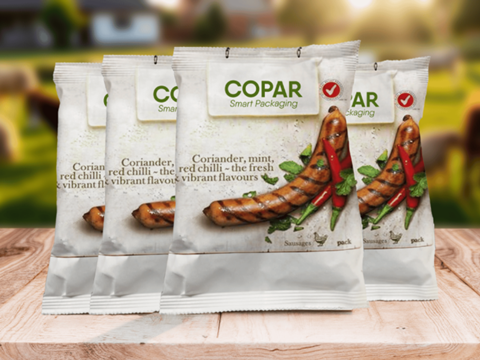
As part of our Finalist Interview series ahead of the Sustainability Awards, we spoke to Copar about its recyclable flow wrap for sausages, said to reduce environmental impact and nominated in the Commercialized Recyclable Packaging category.
You’re a finalist for the Sustainability Awards 2025. Congratulations! To begin, could you summarize your entry in less than 50 words?
COPAR’s recyclable high-barrier flow wrap uses agri-waste paper and Smart Planet Technologies’ HyperBarrier coating to replace unrecyclable multi-layer plastic. It delivers superior moisture, oxygen and grease protection while remaining affordable, scalable and sustainable for diverse commercial food packaging applications.
Why do you think the judges were impressed with your entry? Tell us what’s innovative about your project and/or its impact on packaging sustainability.
HyperBarrier Paper combines Copar’s agri-waste or FSC-certified papers with Smart Planet Technologies’ proprietary nano-composite coatings to deliver recyclable high-barrier packaging. By replacing costly multi-layer structures with a single coating layer, it makes what was once technically challenging now commercially achievable.
The agri-waste paper base is made primarily from agricultural residues such as sugarcane bagasse, providing a tree-free alternative to conventional wood-based paper. By upcycling agricultural waste, it reduces deforestation and air pollution while maintaining the quality expected from premium packaging papers. This gives brands a sustainable foundation without compromising performance.
A key differentiator is affordability. The nano-composite coating uses commodity polyethylene rather than expensive barrier materials like EVOH, nylon, or PVdC, delivering strong moisture, oxygen, and grease resistance at a reduced cost. Combined with its recyclability, HyperBarrier Paper also positions companies to benefit in regions with EPR reporting fees, plastic taxes, or levies on unrecyclable materials - helping them reduce both environmental impact and compliance costs.
The judges recognised the practicality and scalability of this approach. HyperBarrier Paper works across flexible and solid board formats, fits existing production systems and can be deployed at commercial volumes. It offers a clear path for the industry to move away from unrecyclable plastics while meeting performance, cost, and regulatory demands.
Finally, can you tell us about the ongoing development of your project, for example, how your innovation/initiative was received by the industry or what the next steps are in commercialization/product development?
Our project has been progressing rapidly, with strong interest building across the UK, Australia, and North America. We are seeing significant traction through ongoing commercial trials with UK meat producers, successfully passing real-world shelf-life and road testing, and demonstrating HyperBarrier Paper’s ability to meet the demanding requirements of high-moisture and oxygen-sensitive products while delivering recyclability.
In parallel, we are working closely with global form-fill-seal machinery manufacturers and leading converters to integrate our technology into a range of formats, including flow wrap, stand-up pouches, thermoformed trays, and MAP (modified atmosphere packaging) applications. These collaborations are helping us ensure seamless compatibility with existing production lines, which is critical for large-scale adoption.
Beyond flow wrap, we are expanding into other paper-based packaging applications where the same principles can be applied to reduce plastic use without sacrificing performance. HyperBarrier Paper consistently delivers high barrier protection, affordability, and scalability, while also helping brands lower EPR reporting fees, avoid plastic taxes, and reduce costs tied to unrecyclable materials - creating both environmental and financial advantages for customers.
The winners of the Sustainability Awards 2025 will be announced at the Sustainable Packaging Summit, taking place in Utrecht on 10-12 November. The Summit mobilizes leaders of the FMCG value chain, policymakers, NGOs, recyclers and investors to collaborate, remove barriers and identify opportunities on the road to sustainable transformation.
To learn more or register, visit: https://www.packagingsummit.earth/2025
If you liked this story, you might also enjoy:
The ultimate guide to the Packaging and Packaging Waste Regulation in 2025
How are the top brands progressing on packaging sustainability?
Everything you need to know about global packaging sustainability regulation in 2025
The key to increasing the use of reusable packaging in supermarkets

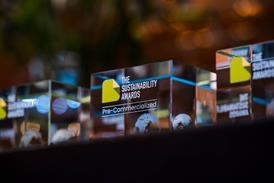
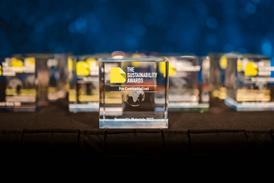
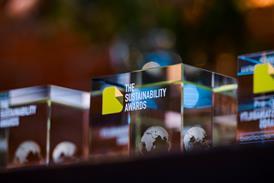
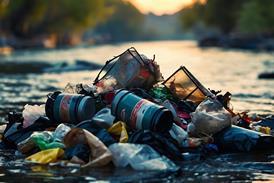
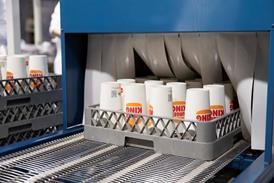














No comments yet